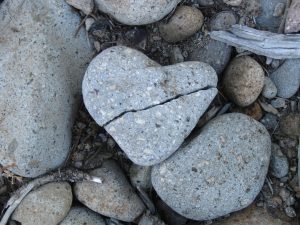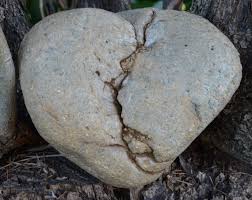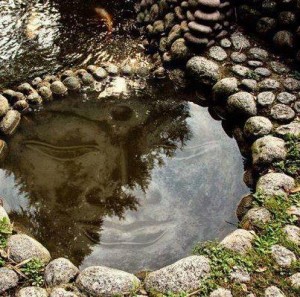 Our Moving into Meditation class continues to draw inspiration from The Five Invitations, Frank Ostaseski’s wonderful book about living a conscious, loving life knowing that one day we will die. Frank is the cofounder of the Zen Hospice Project and Metta Institute. Frank shares about his own close brush with death. He experienced intense dependence and vulnerability during his recovery. The loving kindness and support he received from others helped him to live in wholeness.
Our Moving into Meditation class continues to draw inspiration from The Five Invitations, Frank Ostaseski’s wonderful book about living a conscious, loving life knowing that one day we will die. Frank is the cofounder of the Zen Hospice Project and Metta Institute. Frank shares about his own close brush with death. He experienced intense dependence and vulnerability during his recovery. The loving kindness and support he received from others helped him to live in wholeness.
Living wholeness inspired our Guided Relaxation:
As we are gradually coming to touch the silence within . . . living from the silence within, we come to know our wholeness . . . a wholeness that it is limitless, eternal, trustworthy, joyous, compassionate, loving and real. Feeling breathing we touch the trustworthy . . . Senses sensing . . . the compassionate, loving and real . . . this experience of being . . .
Here we are together . . . exploring being, sharing being . . . It is up to us to live our life in wholeness … to turn to it, and grasp it, through conscious living. . . . Yet often this living wholeness seems to fall through our fingers like sand . . . or water we cup in our hands . . . the drops and grains lost in whispers of self doubt . . . judgments about how we are flawed . . . or not enough . . .
Imagine yourself as a big jigsaw puzzle . . . thousands of pieces making the whole . . . what pieces would you leave out. . . . How many pieces would you discard before you are looking at a fragmented image?
 Frank O. writes: “We all like to look good. We long to be seen as capable, strong, intelligent, sensitive, spiritual, or at least well adjusted. We project a positive self image. Few of us want to be known for our helplessness, fear, anger, or ignorance, or want others to know that sometimes we are more of a mess than we’d like to admit.
Frank O. writes: “We all like to look good. We long to be seen as capable, strong, intelligent, sensitive, spiritual, or at least well adjusted. We project a positive self image. Few of us want to be known for our helplessness, fear, anger, or ignorance, or want others to know that sometimes we are more of a mess than we’d like to admit.
. . . I have found an “undesirable” aspect of myself, one about which I previously felt ashamed and kept tucked away, to be the very quality that allowed me to meet another person’s suffering with compassion instead of fear or pity. My own experience of abuse allowed me to empathize with both the abused and the abuser . . . . It is not our expertise, but rather the wisdom gained from our own suffering, vulnerability, and healing that enables us to be of real assistance to others. It is the exploration of our inner lives that facilitates us in forming an empathetic bridge from our experience to theirs.
To be whole, we need to include, accept and connect all parts of ourselves. We need acceptance of our conflicting qualities and seeming incongruity of our inner & outer worlds.
Wholeness does not mean perfection. It means no part left out.”
We all hunger for meaning . . . our need for connection is so much about our needing to be understood. . . . it is connection that we find wholeness . . .
 In his On Being Interview, The Biology of the Spirit, physician and author, Sherwin Nuland “says that once a person can recognize that the experience of pain, and the human response to pain, is universal, there’s a shift. A recognition. Understanding. And with this, we change how we treat each other, and move toward healing. As Nuland puts it, “You know what everybody needs? You want to put it into a single word? Everybody needs to be understood.
In his On Being Interview, The Biology of the Spirit, physician and author, Sherwin Nuland “says that once a person can recognize that the experience of pain, and the human response to pain, is universal, there’s a shift. A recognition. Understanding. And with this, we change how we treat each other, and move toward healing. As Nuland puts it, “You know what everybody needs? You want to put it into a single word? Everybody needs to be understood.
. . . To be understood is to be recognized. To be recognized, by yourself and by others, pulls you from a one-dimensional, reduced existence to a three-dimensional creature bestowed with possibility. And how important it is to find pathways to this wholeness. . . . “
. . . Poet Jane Hirshfield writes “In the whole-heartedness of concentration, the world and self begin to cohere. With that state comes an enlarging: of what may be known, what may be felt, what may be done.” It is when we pause, to step out of time in whole-hearted concentration – somehow we realize our wholeness . . . our very being part of something so much bigger than words or even imagination . . . Belief, poet Janet Gallagher Nestor’s praise of wholeness:
Silence.
We are born from silence.
If we live from the silence within, we know our wholeness lives there too.
It is limitless, eternal, trustworthy, joyous, compassionate, loving and real.
Wholeness is not broken.
It cannot be broken, as each piece is part of the whole and contains the mystery of the whole.
We cannot run from wholeness or turn away from it.
It goes with us, because we are wholeness.
I look at my finger and it is not only a finger. It is part of a hand that is part of an arm, that is part of a shoulder, that is part of a body, that is part of creation, and creation is wholeness.
This truth is challenging to understand. We cannot find wholeness because it is not lost.
We are wholeness. When our mind is quiet and still, our heart is open, and our trust is strong, trust turns and looks straight into our eyes and speaks, “Here I am, I am wholeness. I have always been here. I was with you before you were born and I remain throughout time, because I am you.”
It is up to us to live our life in wholeness . . . to turn to it, and grasp it, through conscious living.
Wholeness is the part of us that we touch from time to time when we pray, meditate and contemplate.
The more we touch our wholeness, the more we believe in its existence. It is our belief in the existence of our wholeness that makes us whole.
Inhaling: Still mind, open heart.
Exhaling: I am whole. We are whole.
Inhaling: Compassionate, loving, real.
Exhaling: I am whole. We are whole.
Inhaling: Living from the silence within.
Exhaling: I am whole. We are whole.

